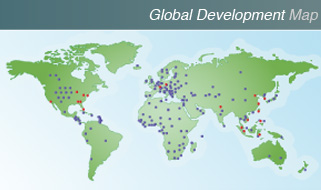- “There's a kind of a sort of : cost
There's a couple of things get: lost”
(Wicked)
Posted February 7, 2013
The FDA has called a public hearing late in February to solicit ideas and opinions on how they should think about, and evaluate clinical trials to treat ALS. The Agency has come under criticism over the past year for not being “supportive” enough of novel treatments for incurable diseases (like ALS) and innovation in general. The FDA has responded basically by stating that supporting innovation is not their mission and that their job is to make sure medicines are safe and actually work. The FDA is (rightly) considered the “gold standard” throughout the world. This reputation as the “toughest” regulatory agency to deal with is a reputation they fight to maintain, and they believe that through such diligence they can best protect the American public.
This is of course, a very “institutional” approach. There are “big picture” policy issues involved in the way the FDA looks at any actions that they take; and that institutional approach informs all of their decisions.
I had two meetings recently that have me questioning this approach. First, I had the good fortune to meet with the CEO of ALSA here in Washington, D.C. The ALS Association is a remarkable organization that represents the interests of the ALS community from patients to researchers to caregivers. Their programs range from education to practical patient services to funding research worldwide. A visit to ALSA.org is well worthwhile for those of you not familiar with their herculean efforts. Jane Gilbert (their CEO) is a remarkably energetic and talented executive with a very difficult job. Just how difficult was brought home to me by my second meeting.
I also recently met with Pete Frates (petefrates.com) and his family. Pete is an engaging 28-year-old young man recently diagnosed with ALS. An ex-captain of the Boston College baseball team, it is particularly painful to watch him deal with the physical limitations he is already experiencing.
ALSA has in its orbit the “big picture.” They are concerned with making sure a solid, long range effort is in place to discover the root causes of the disease and its cure. Their involvement in research goes from the bench to Boardrooms of the Biotech and Pharma world. They are also responsible for assuring that the engines of government and the insurance industry are properly tuned for the ALS community needs. In addition, they manage chapters all over the Country in an effort to get their patient services and educational programs implemented at the grass roots level. It is, in every way, an “institutional” undertaking. And I may say unabashedly, they do a wonderful and desperately needed job.
The contrast in with meeting with Pete and his family, however, could not be starker. I met with Pete, his mom and dad, his sister and her beautiful baby, and his fiancé. As you can no doubt tell, Pete has a wonderful support system around him. But there is no denial about his condition; or (to borrow the phrase) the fierce urgency of now. Like all ALS patients Pete knows that the clock is mercilessly ticking. You can go to his website (which I recommend) and contribute; like so many ALS patients I have met, he is doing all he can to help in the broader research effort. But as his mother Nancy said to me, “We want our son to be around.” Their focus, as it should be, was on Pete’s options, and his current and future treatment. One person, one hope, one focus.
And that is the balance that is so difficult to maintain between even an institution like ALSA, and its core constituency, ALS patients. ALSA must face the hard truth that this could be a long long fight; they must take a long view. On the other hand, every patient individually knows that time is the one commodity he or she doesn’t have.
Neuralstem, at times, also has to take an institutional view on developing our ALS therapy. We need to think about and plan for multiple trials, and a regulatory path that historically will take longer than any living ALS patient has. And yet, as we do that, we are reminded that there’s a terrible cost; and more than a couple of things get lost.
At the end of our meeting, Pete’s mother looked at me and asked a simple, straightforward question; “What would you do if he were your son?”
It was not a policy question about whether the FDA should allow biomarkers to be used as interim efficacy signs to speed up clinical trials; or how many patients one needs to statistically power the results from a trial; or how fast the FDA should allow us to “dose up” in our Phase II trial; all serious and important “big picture” questions, with real life implications for the ALS community. But I can’t help thinking, that the right way to ask all of those questions, and to answer all of those questions, is to preface them with Nancy’s question. What would you do if it were your son?
It is too easy to lose sight of the human cost from this disease in these institutional settings. I can’t help but think that if every decision maker in any of these institutions had to look Nancy Frate in the eye and answer that one question before they made any decision, the path forward would be very different.






